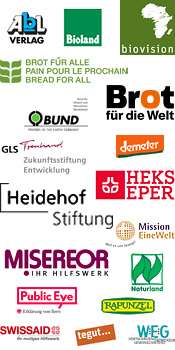Nachricht
16.09.2021 | permalink
UN report calls for “repurposing” of harmful agricultural subsidies

Current support to agricultural producers is harmful for the environment and human health, while disadvantaging women and smallholder farmers, says a new UN report published on September 14. This support is steering us away from achieving the Sustainable Development Goals (SDGs) and the goals of the Paris Agreement. But we can redirect agricultural subsidies to drive a transformation towards healthier, more sustainable, equitable and efficient food systems, according to the report released by the Food and Agriculture Organisation (FAO), the UN Development Programme and UN Environment (UNEP). Global agricultural support currently accounts for almost USD 540 billion a year. The UN agencies estimate that 87% of producer supports are harmful to the 2030 agenda. “This report, released on the eve of the UN Food Systems Summit, is a wake-up call for governments around the world to rethink agricultural support schemes to make them fit for purpose to transform our agri-food systems and contribute to the Four Betters: Better nutrition, better production, better environment and a better life,” said FAO Director-General QU Dongyu.
The authors write that between 2013 and 2018, net support to agricultural producers averaged almost USD 540 billion per year, representing around 15% of the total agricultural production value. More than half ($294 billion) is provided to farmers as price incentives, such as import tariffs and export subsidies, while the rest ($245 billion) is in the form of fiscal subsidies to farmers, the majority (70%) being tied to the production of a specific commodity or input. “This support is heavily biased towards measures that are distorting (thus leading to inefficiency), unequally distributed, and harmful for the environment and human health,” says the report. The authors explain that “support coupled to production can ultimately hamper sustainable market development, trigger price shocks at a global scale, incentivize the production of emission-intensive products, or penalize the availability and affordability of more diversified and nutritious food, particularly for the poorest consumers.” Since this support is often inequitable, it is putting big agri-business ahead of small farmers, a large share of whom are women. Only about $110 billion of the total amount was used to support infrastructure, research and development, and benefits the general food and agriculture sector.
The authors highlight that agriculture is one of the main contributors to climate change through greenhouse gas emissions from different sources, including manure on pastureland, synthetic fertilizers, rice cultivation, burning crop residue, and land-use change. Global support to farmers is projected to increase to almost USD 1.8 trillion in 2030 if current trends continue. Continuing with agricultural support-as-usual would worsen the planetary crisis and ultimately harm human well-being, warns the report. It therefore calls for a redirection of damaging incentives and says this can be a game changer because it offers governments an opportunity to optimize the use of scarce public resources to transform food systems in ways that make them not only more efficient, but also more supportive of the SDGs. “Governments have an opportunity now to transform agriculture into a major driver of human well-being, and into a solution for the imminent threats of climate change, nature loss, and pollution,” said Inger Andersen, Executive Director of UNEP. “By shifting to more nature-positive, equitable and efficient agricultural support, we can improve livelihoods, and at the same time cut emissions, protect and restore ecosystems, and reduce the use of agrochemicals.” For high-income countries, this means shifting support away from an outsized meat and dairy industry, which accounts for 14.5% of global greenhouse gas emissions. In lower-income countries, governments should consider repurposing their support for toxic pesticides and fertilizers or the growth of monocultures. The authors stress the importance of reconfiguring agricultural support rather than eliminating it completely. Simply removing subsidies could have adverse trade-offs, such as decreasing crop and livestock farming production, lower farm incomes and farm employment and higher food costs.
According to the report, a few countries have already begun repurposing and reforming agricultural support. The authors mention examples such as the Indian state of Andhra Pradesh that adopted a policy of Zero Budget Natural Farming; the 2006 reform of agricultural policies in China that supports decreased use of mineral fertilizers and chemical pesticides or the Single Payment Scheme in the UK that removed subsidies in agreement with the National Farmers’ Union. But the UN organisations say that action needs to be broader, bolder and faster worldwide. The report recommends a six-step approach to develop a tailored repurposing strategy for agricultural support. First, governments need to estimate the support already provided. Second, they need to understand its positive and negative impacts. Third, the approach for repurposing agricultural producer support needs to be designed and necessary reforms need to be identified. The fourth step is to estimate the future impact of the repurposing strategy and step 5 is to review and refine the strategy prior to implementation. Finally, the outcomes of the new agricultural producer support needs to be monitored. According to the authors, a transparent, multi-stakeholder approach is integral to the six-step repurposing process and smallholders are key in this process: “Smallholder farmers in particular, many of whom are women, make a significant contribution to addressing food security and nutrition and promoting resilience. Furthermore, women produce most of the food consumed locally, making small farms central for poverty reduction, gender equality and for women’s empowerment in rural areas. Small farms are found to be more productive per acre than large farms, better for spurring surrounding economic growth, and better for ecosystem and biodiversity conservation. It is therefore critical to recognize the role of these actors and include them in agricultural repurposing policy processes if the shift to healthier, more sustainable, equitable and efficient food systems is to be successful.” (ab)

